How to Plant a Tree
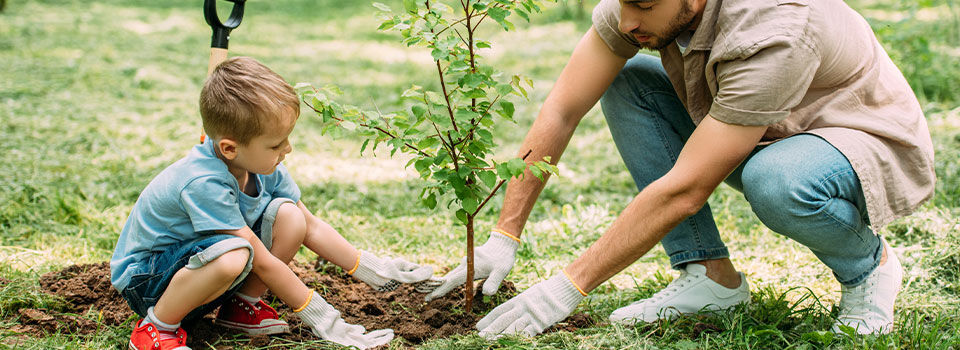
Most of us take trees for granted and don’t realize how important they are in so many ways. They offer shade from the sun and the wind, not to mention a home to a whole host of four-legged and winged creatures. Most importantly, trees are the world’s lungs‒they clean our air of carbon dioxide and make life on earth possible. So planting trees is good for all of us, but it’s a big investment. Location and pre- and post-planting care are all keys to growing a healthy and long-lasting tree.
Set a date
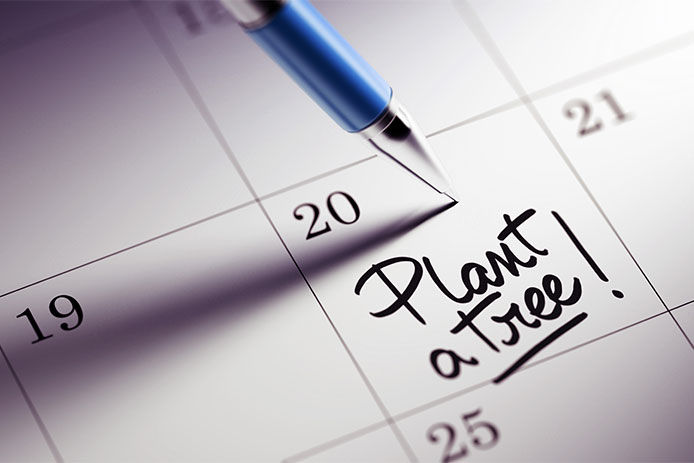
“Call before you dig” and allow a few days for local utility companies to come and locate all underground utilities. Planting can take place any time of the year you’re able to dig the proper hole — however, the more time between the planting and summer’s arrival, the better. Fall and early spring are the best times to plant trees and shrubs or relocate already existing ones. Cooler conditions allow plants to establish strong roots before spring rains and summer heat start to spur top growth.
Dig the hole
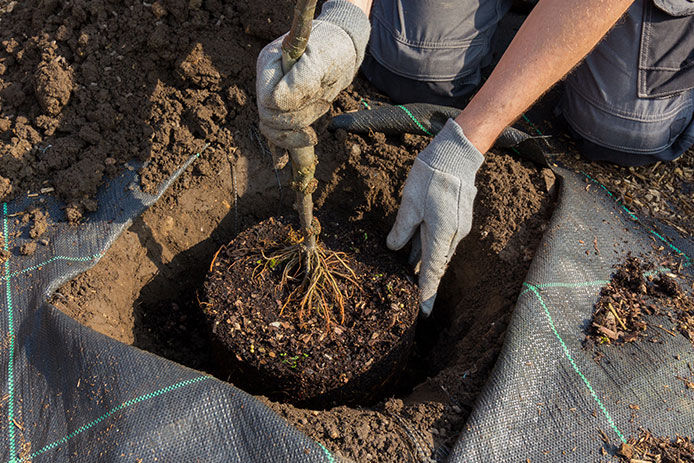
Your planting hole should be 2-3 times wider than the root ball to allow plenty of room to add loose soil for the roots to spread out. But it should be the same depth as the root ball. That’s because topsoil will wash away slightly and leave a pocket there for water to collect, which could lead to root rot or disease. A too-deep root ball will also leave new roots struggling for oxygen, so make sure the trunk flare is just slightly above the soil level.
Straighten or cut the roots
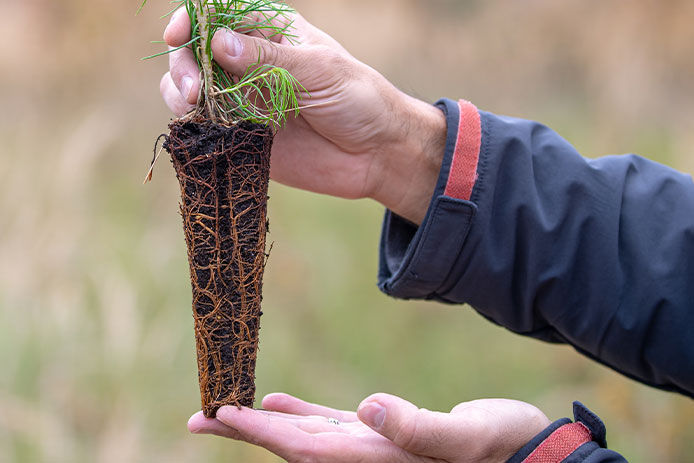
If you have a tree in a container or wire basket, remove it and check for circling roots. Straighten out any patterns, cut, or remove them because leaving them constricted like that will likely lead the tree to a slow death. New research says to resist amending the soil with organic matter unless you plan to amend the entire area where roots will grow. Roots growing in amended soil don’t usually spread out into native soil, so you’re likely to end up with a restricted root system once again.
Straighten, fill, stake, and mulch
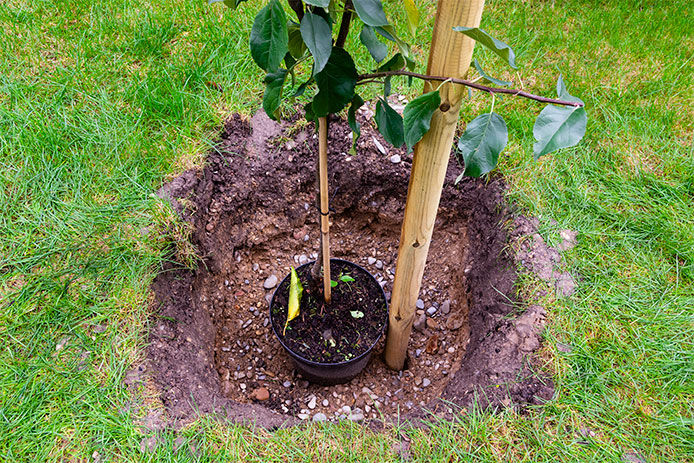
Before backfilling the hole, make sure to view the tree from all directions to confirm it’s standing straight. Pack soil around the base of the root ball to stabilize it, then begin filling in the rest of the hole firmly to eliminate air pockets. Stake the tree if necessary, but studies have shown that unstaked trees develop a strong trunk and root systems more quickly. Add mulch to the base of the tree to help contain moisture, moderate soil temperatures, and fend off pesky weeds and grass.
Water after planting
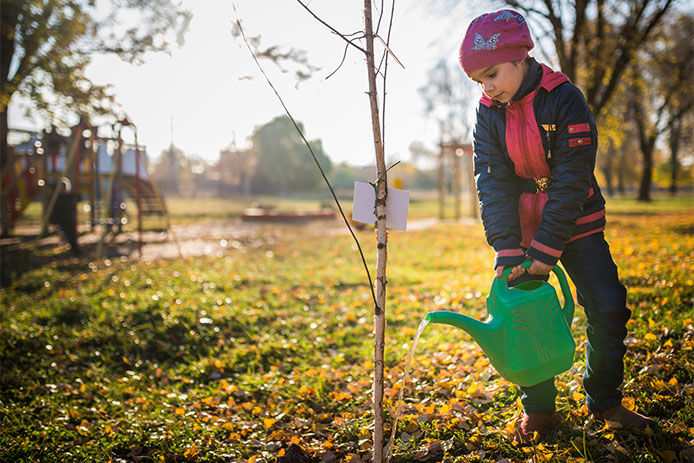
Keeping a newly planted tree well-watered is key to getting it established in its new surroundings. But we’re not talking about short blasts of water from a hand-held hose or yard sprinkler. Slow and deep irrigation is critical, and it can take several weeks or even months. Slow watering via soaker hoses keeps the soil around the roots saturated, so the roots have time to absorb the moisture, thus avoiding excess runoff. The frequency of watering will largely depend on the condition of the root ball when it arrived. Large trees with root balls wrapped in burlap have lost their feeder roots when dug up, so providing adequate water is critical for them. On the flip side, a waterlogged tree is in as much danger as one that’s too dry, so keep a close eye on how it responds to watering early on. Then taper watering down over time. Taking care during planting and beyond will result in a beautiful, life-giving tree you’ll be proud to watch grow and mature.